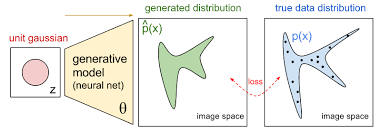
Generative models are a class of AI models that are designed to generate new data that is similar to the original data that was used to train the model. They have become increasingly popular in recent years due to their ability to generate realistic images, sounds, and even text. In this article, we will discuss what generative models are, the different types of generative models, and some of the real-world applications of generative models.
What are Generative Models?
Generative models are a type of machine learning model that generates new data by learning the underlying patterns in the data it was trained on. These models use probabilistic techniques to generate new data that is similar to the original data. This means that generative models can be used to generate images, sounds, and even text that looks like it was created by a human.
Types of Generative Models
There are several types of generative models, including:
1- Variational Autoencoders (VAEs) - VAEs are a type of generative model that is used to generate new images. They work by compressing an image into a lower-dimensional representation and then reconstructing the original image from this representation.
2- Generative Adversarial Networks (GANs) - GANs are a type of generative model that is used to generate new images. They work by using two neural networks: a generator and a discriminator. The generator creates new images, while the discriminator determines if these images are real or fake.
3- Autoregressive Models - Autoregressive models are a type of generative model that is used to generate new sequences, such as text or speech. They work by predicting the probability of the next item in the sequence given the previous items.
Real-World Applications of Generative Models
Generative models have a wide range of real-world applications, including:
1- Image and Video Synthesis - Generative models can be used to generate realistic images and videos, such as those used in video games or virtual reality.
2- Language Generation - Generative models can be used to generate natural language text, such as product descriptions, news articles, or chatbot responses.
3- Drug Discovery - Generative models can be used to generate new drug compounds that have specific properties, such as being able to target certain diseases.
4- Music Composition - Generative models can be used to compose new music that sounds similar to music composed by humans.
5- Data Augmentation - Generative models can be used to augment existing datasets with new data that is similar to the original data.
Conclusion
Generative models are a powerful tool for creating new data that is similar to the original data. They have a wide range of applications, from generating realistic images and videos to drug discovery and music composition. As the field of machine learning continues to evolve, we can expect to see even more innovative applications of generative models in the future.